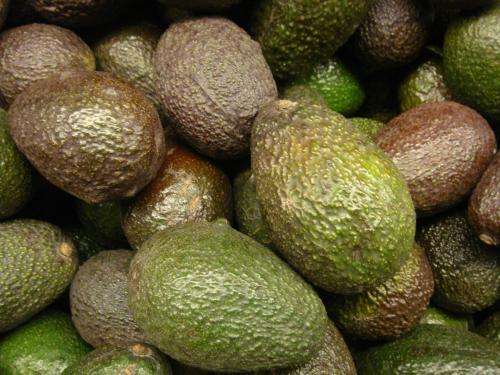In the face of imminent arrival of avocado plague, scientist undertake preventive measures

From Asia, the red ambrosia beetle (Xyleborus glabratus) has proved its damaging potential in Florida, where it attacked different varieties of trees of the laurel family, including avocado, resulting in death.
Because of the territorial proximity, Mexico has taken actions for the detection and subsequent biological control of the insect, a task in which various institutions are involved. So it was that in November of 2014, at the Institute of Ecology (INECOL) in Xalapa, Veracruz (west coast of Mexico), an informative workshop was held in which various experts from different countries exchanged their experiences with the ambrosia beetle, in order to stop its destructive path.
One of the scientists involved, Larissa Guillén Conde, INECOL researcher, explained in an interview that to the international workshop attended experts in both fungus, plants and insects from South Africa, Israel and the United States, who shared their knowledge of the problem caused by the insect.
The biology of pests
Guillen Conde says female Xyleborus glabratus reaches the trunks of Lauraceae, then bores inside them, transmitting a fungus that lives in its mouth called Raffaelea lauricola , which reproduces in the gap generated; for the insect, this action is very important, because it it obtains food. The problem starts when the hosting tree detects the fungus and reacts violently by blocking its xylem (circulation system that carries water to the entire structure) consuming itself within approximately one month.
"The insect eggs hatch in the tree, go through the larva stage and reach adulthood, as females and males. They reproduce among siblings, so they have no need to leave the tree, because they eat and reproduce there; they only leave the host when they need to invade another one.
"That is why in Florida, forests are being devastated, especially the avocado" explains the INECOL researcher. She adds that the problem is important for Mexico because the presence of another beetle has been detected (Euwallacea fornicatus) in California, with damaging potential in the avocado trees of that entity.
Guillen Conde is involved in scientific work with both beetles from her experience in the chemical ecology, ie studying all interactions between insects using chemicals released by themselves or other living organisms.
"Volatile compounds are investigated in various types of Lauraceae that may be attractive for the beetles and with them developing artificial tallow to be used in trapping or monitoring the pest," explains the specialist.
She adds that the Mexican Secretariat of Agriculture, Livestock, Rural Development, Fisheries and Food (SAGARPA) has issued newsletters regarding the pests and currently the Secretary of Environment and Natural Resources (SEMARNAT) works in forests on the northern border to see if the beetles are present.
She also notes that as part of the scientific team a bio-geographer is working in a model that will reveal how long and in which specific regions this pest is present; "This is Andres Lira, who is central for the government's strategy to fight the insect.
"In the new facilities of the INECOL, in a new building called Biominic, the issue will be addressed at the national level from different perspectives and synergies; this will be the flagship project with which we will launch the new facilities. My participation is on the lines of Chemical Ecology, for volatile compounds of insects and fungi," says Guillen Conde.
Finally, upon specific questions about how these pests may have traveled from Asia to America, the specialist says that the strongest hypothesis is that it nested on wood used for packaging and shipping goods, were they could have been present as an egg, larva, pupa or adult.
Provided by Investigación y Desarrollo


















